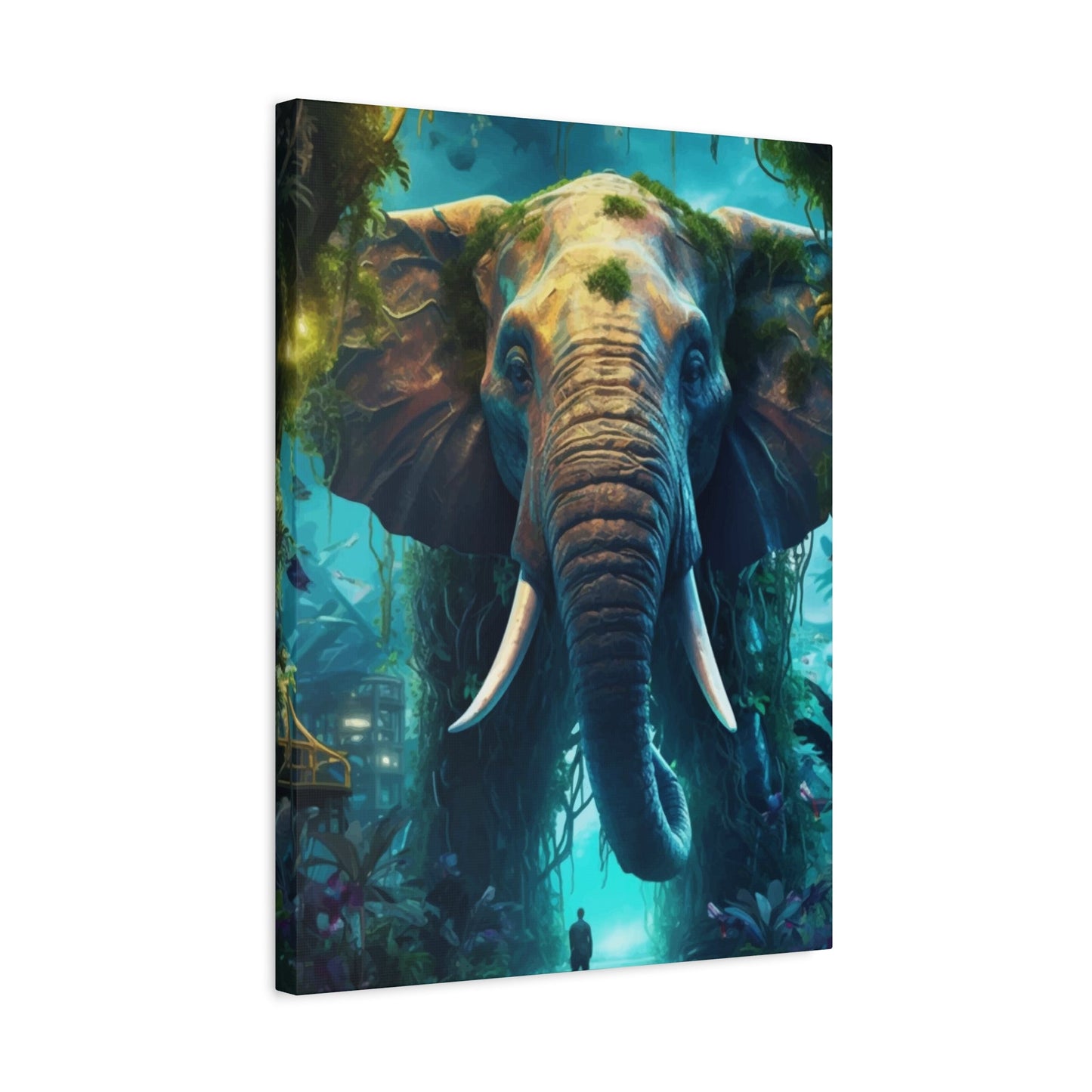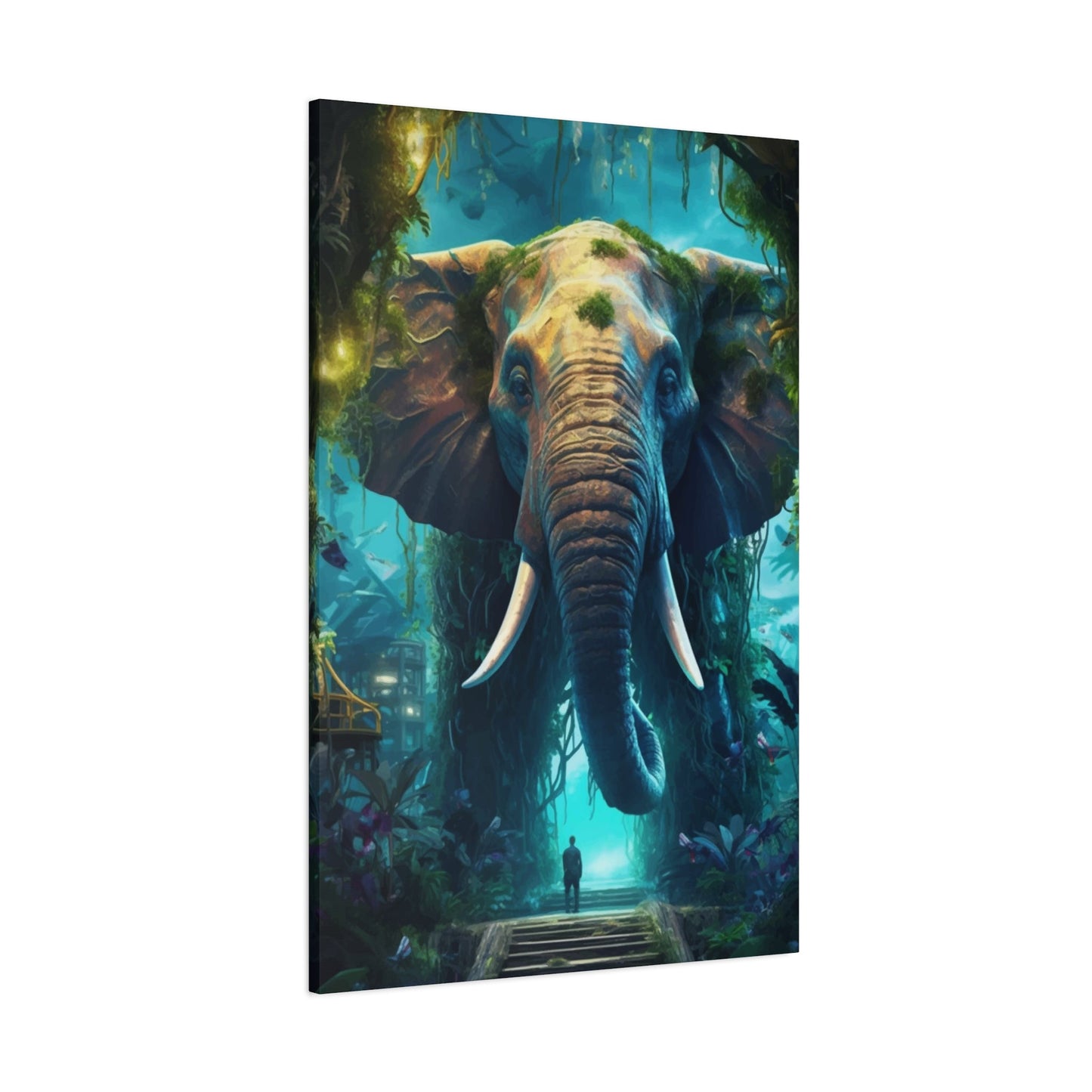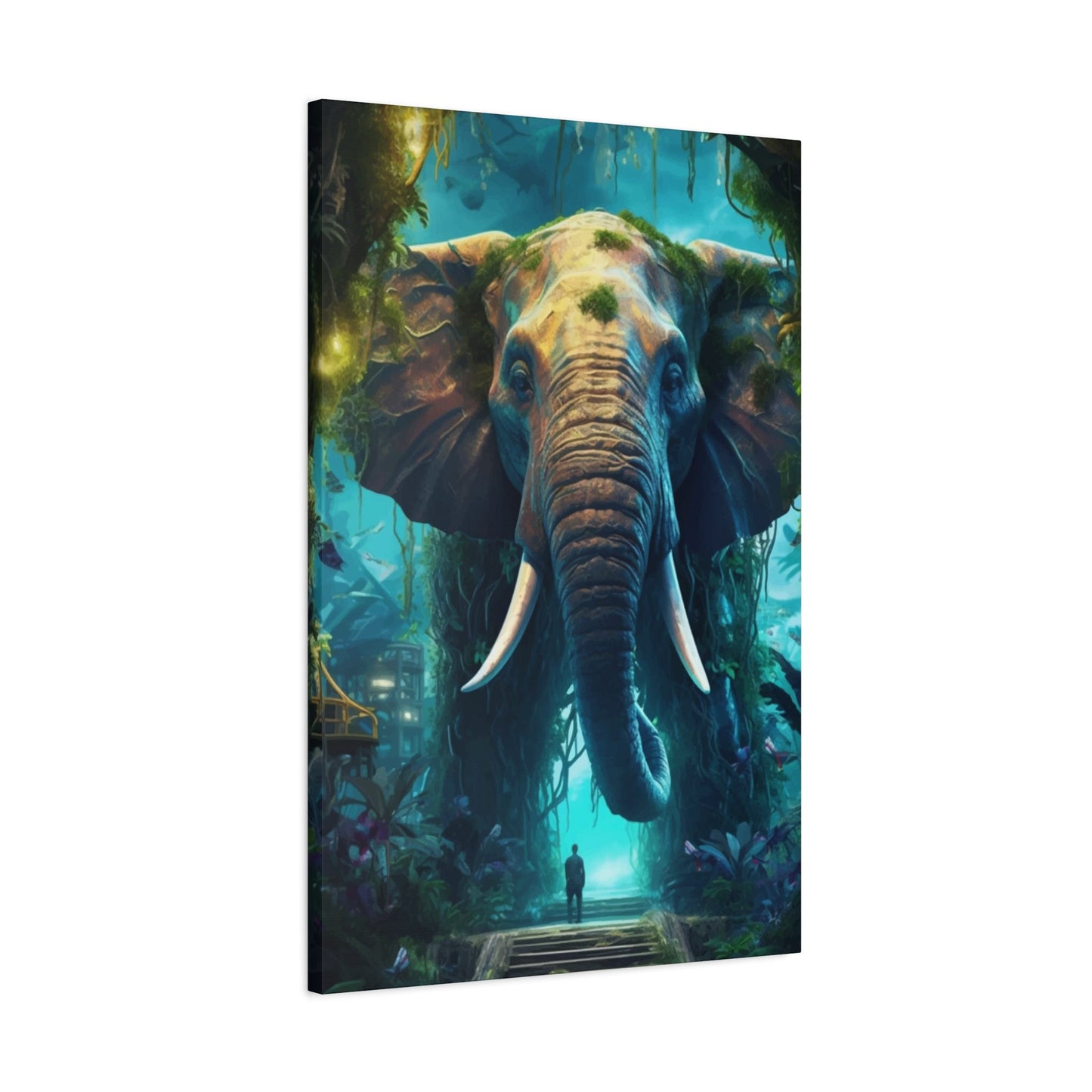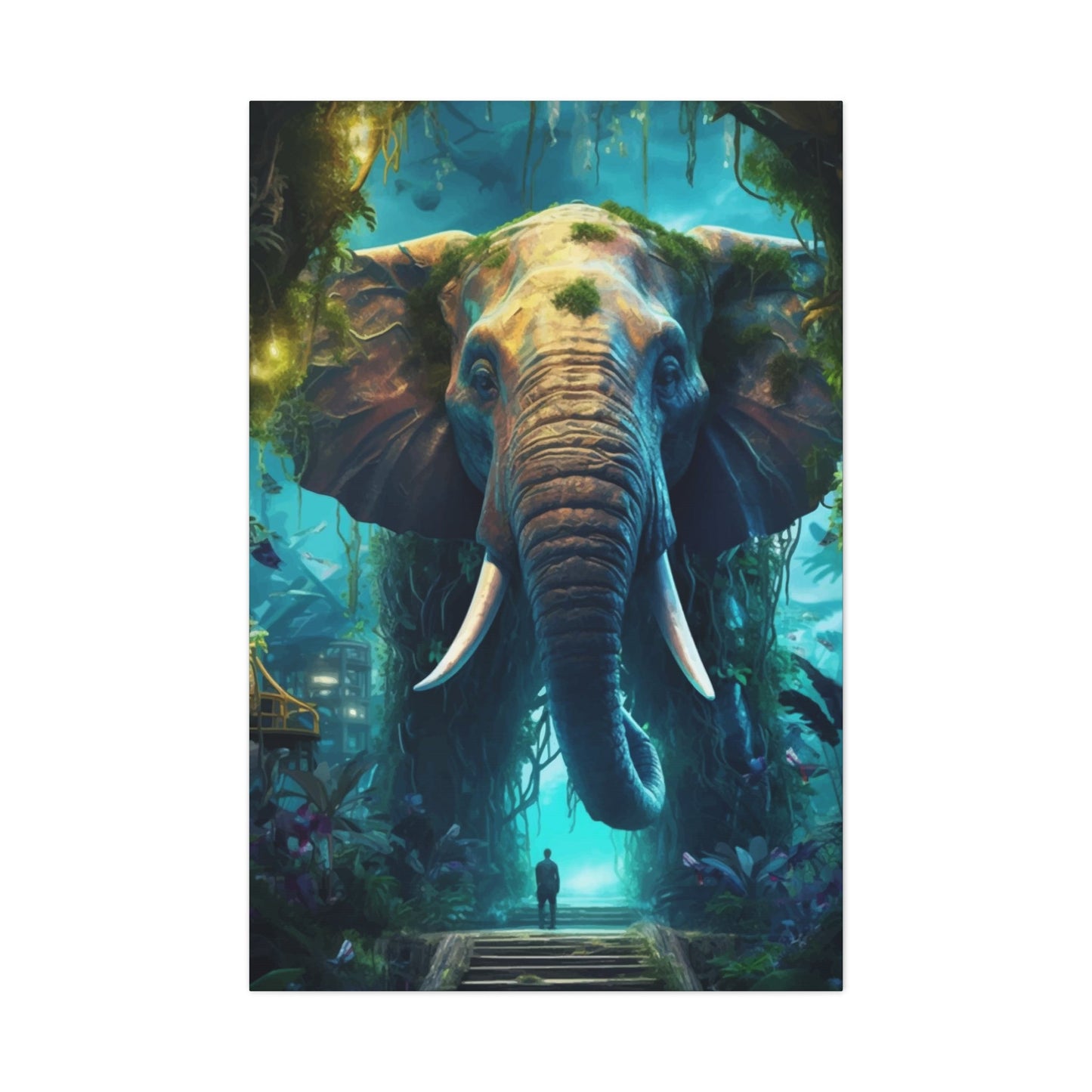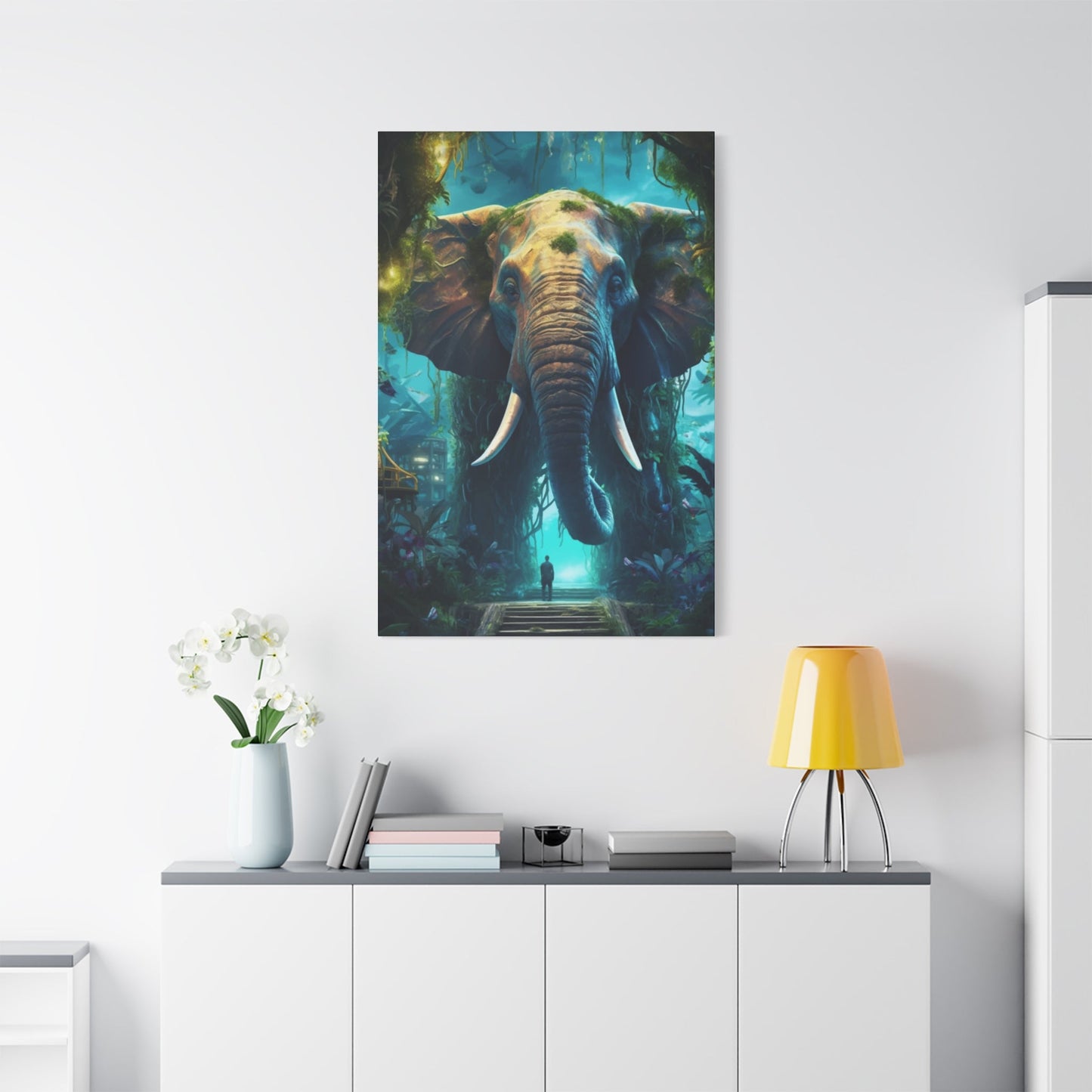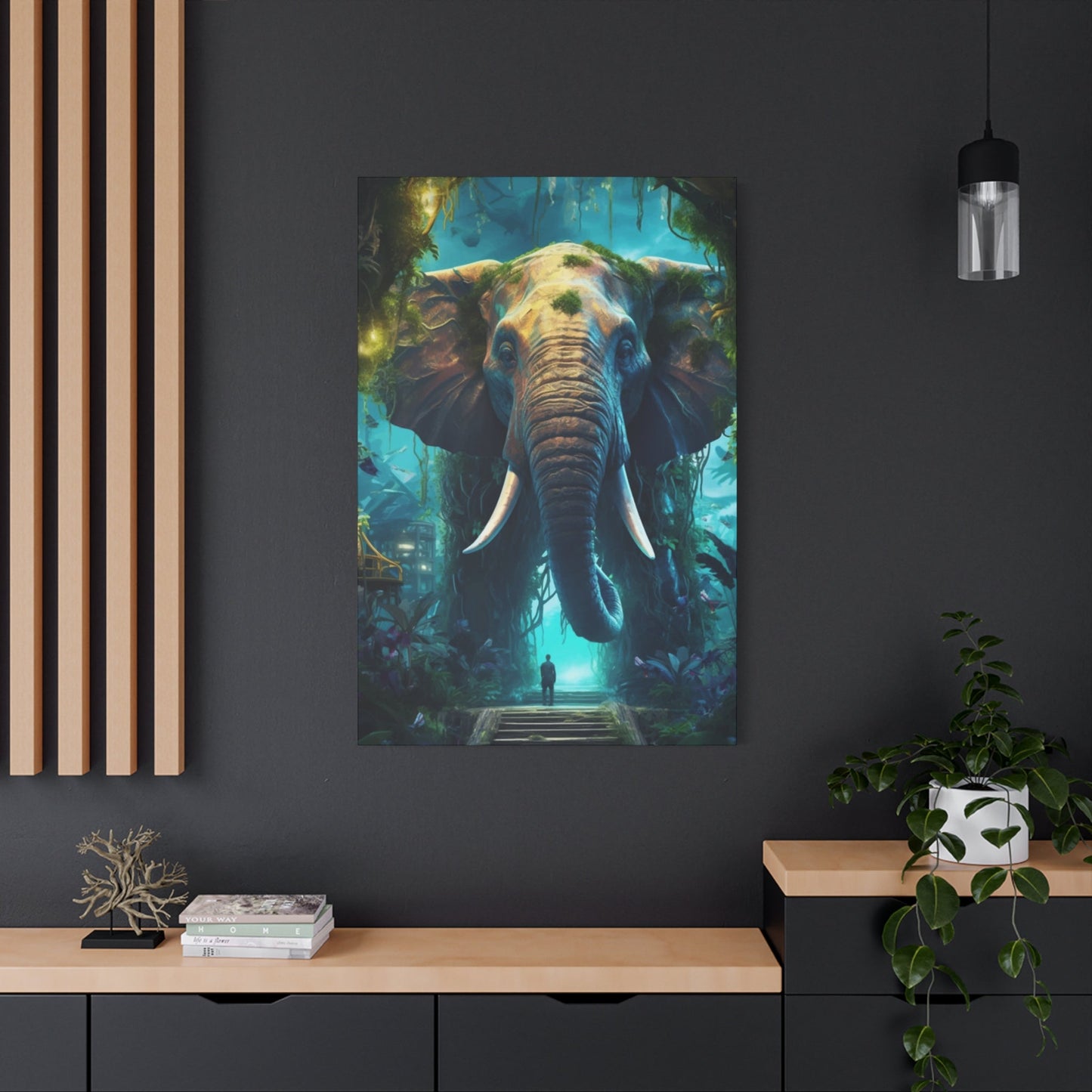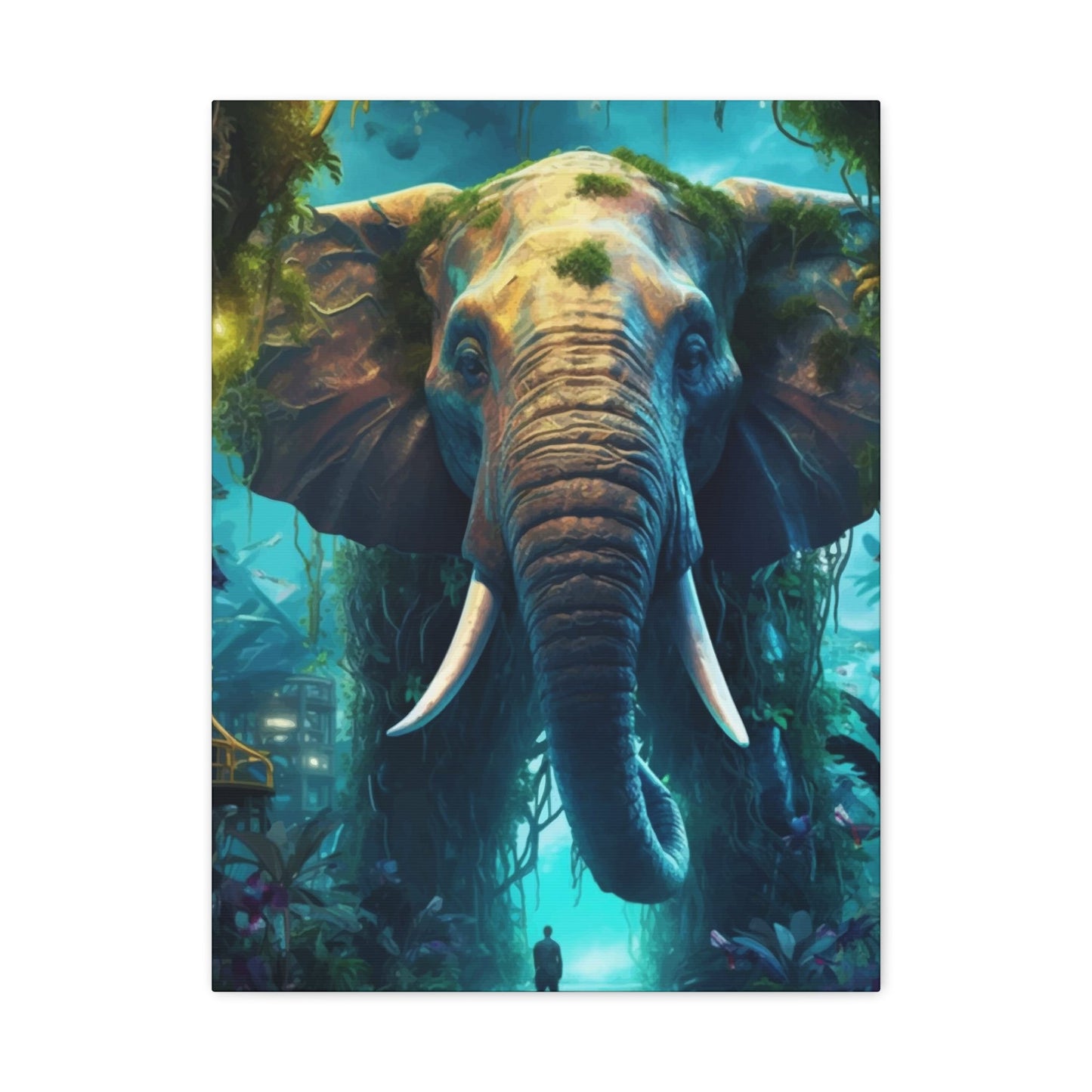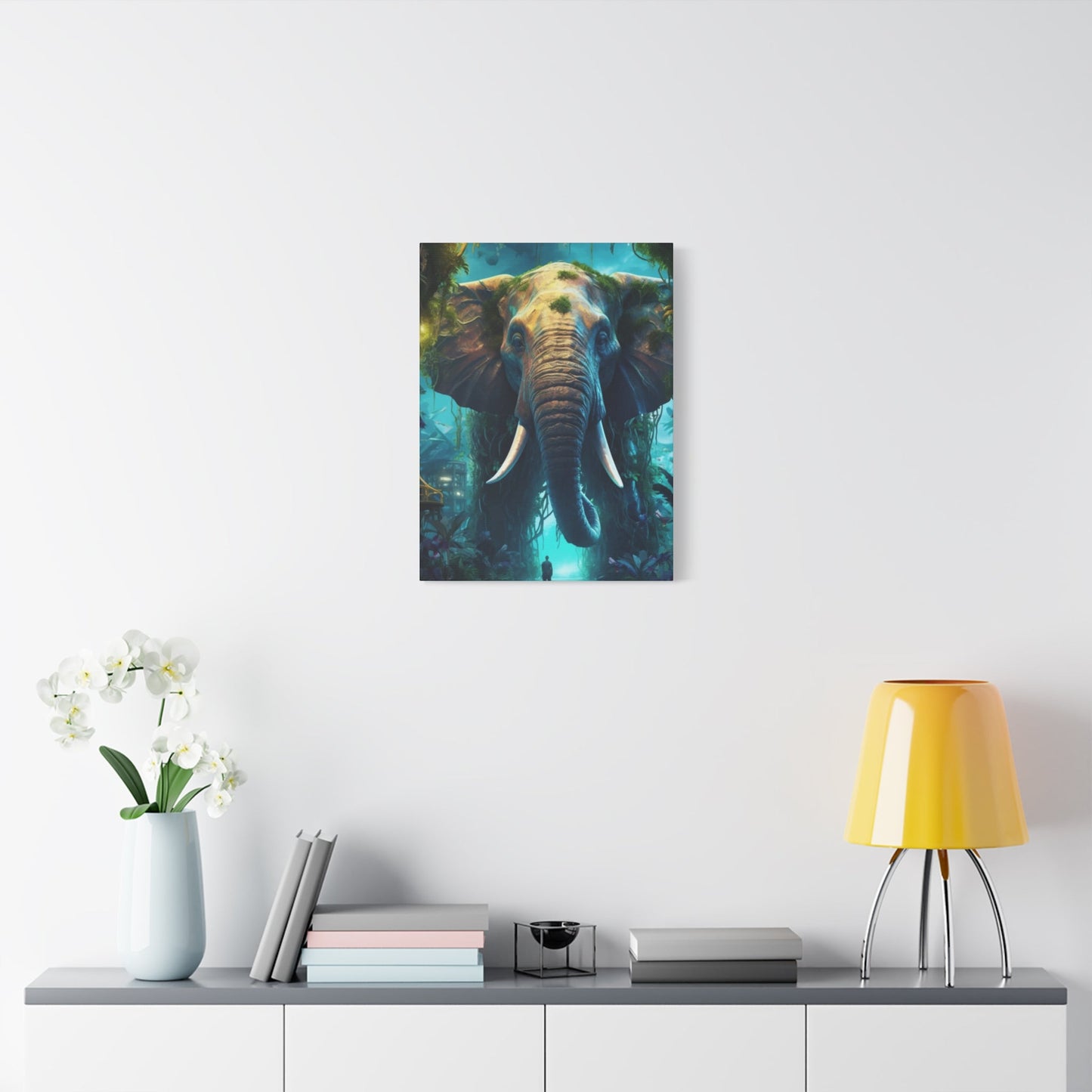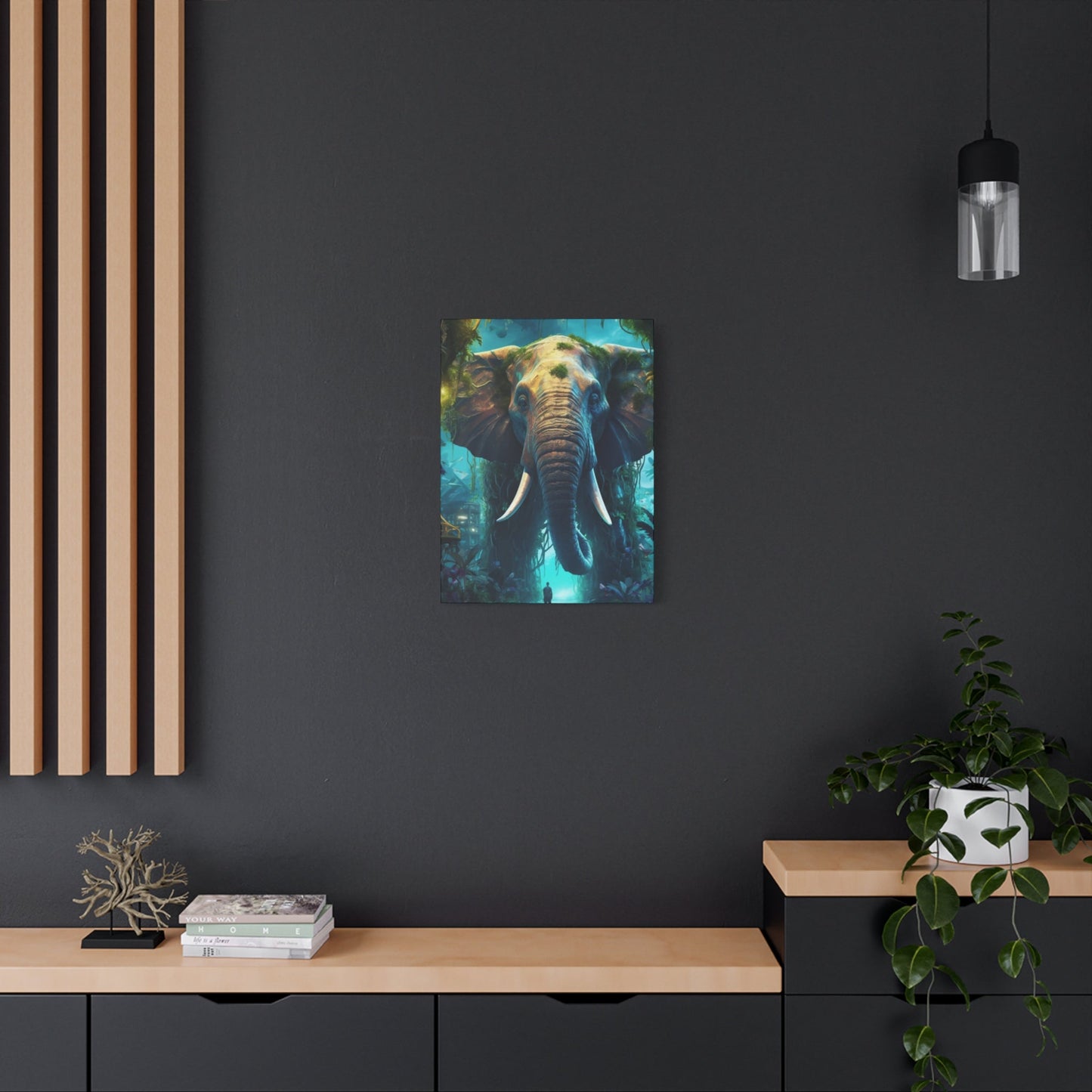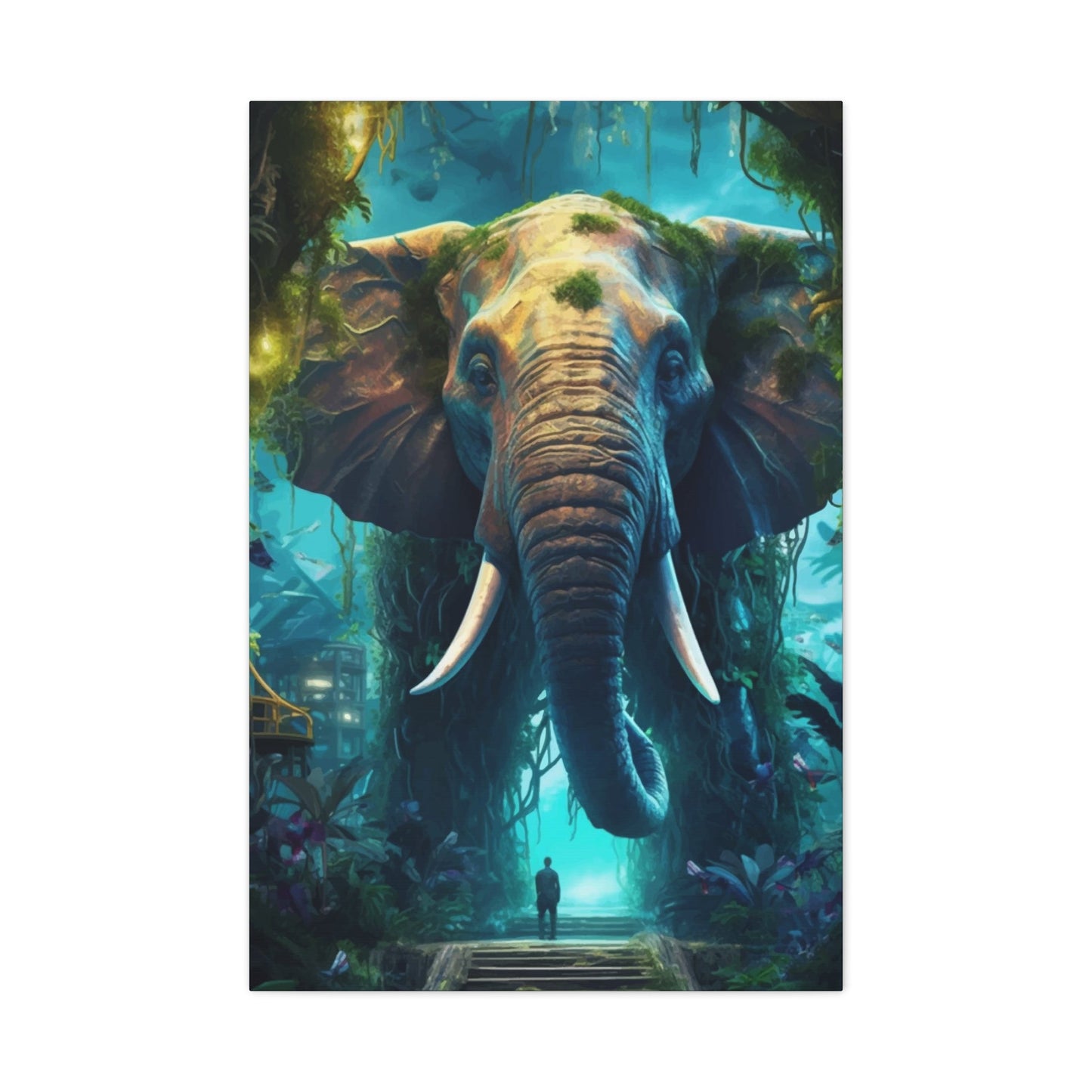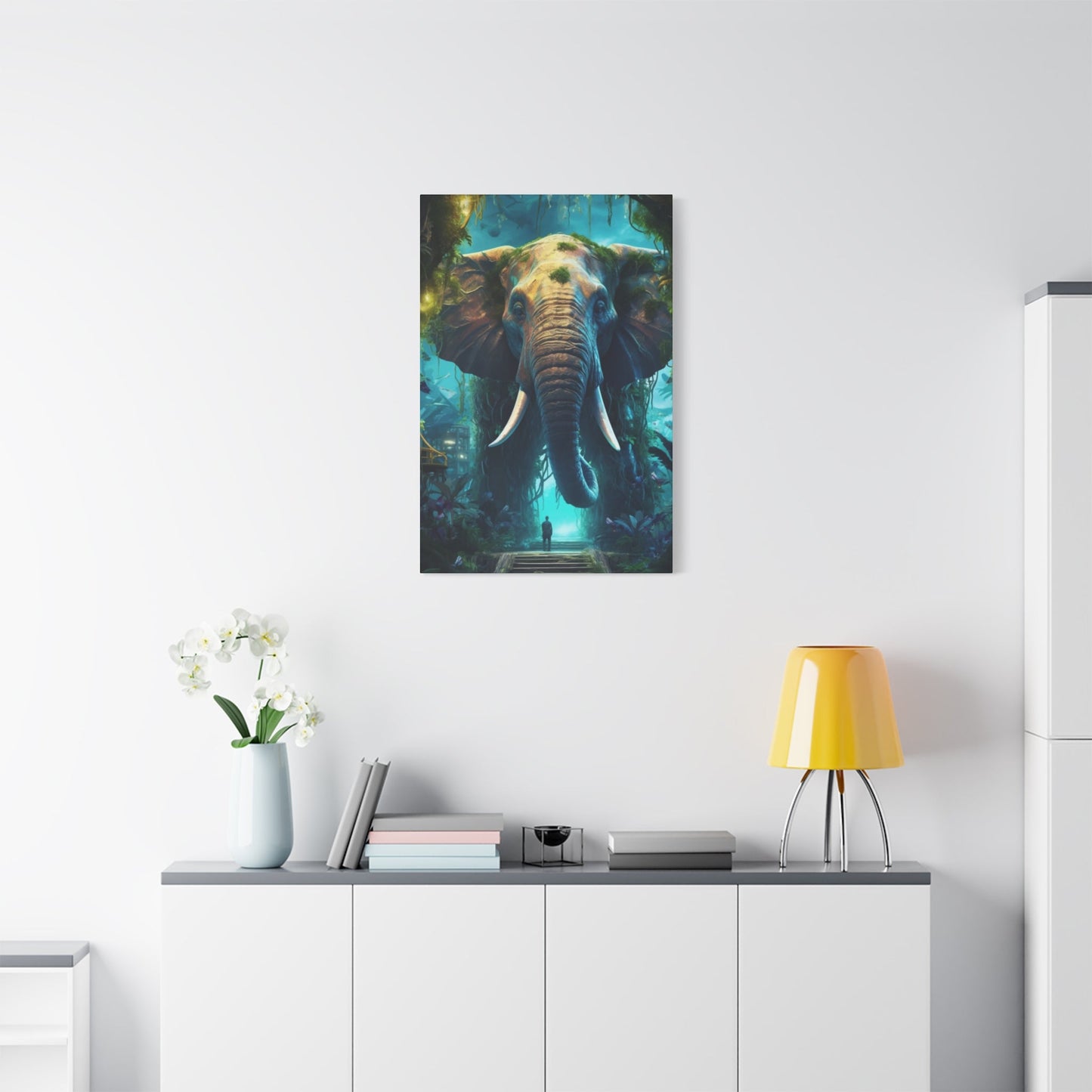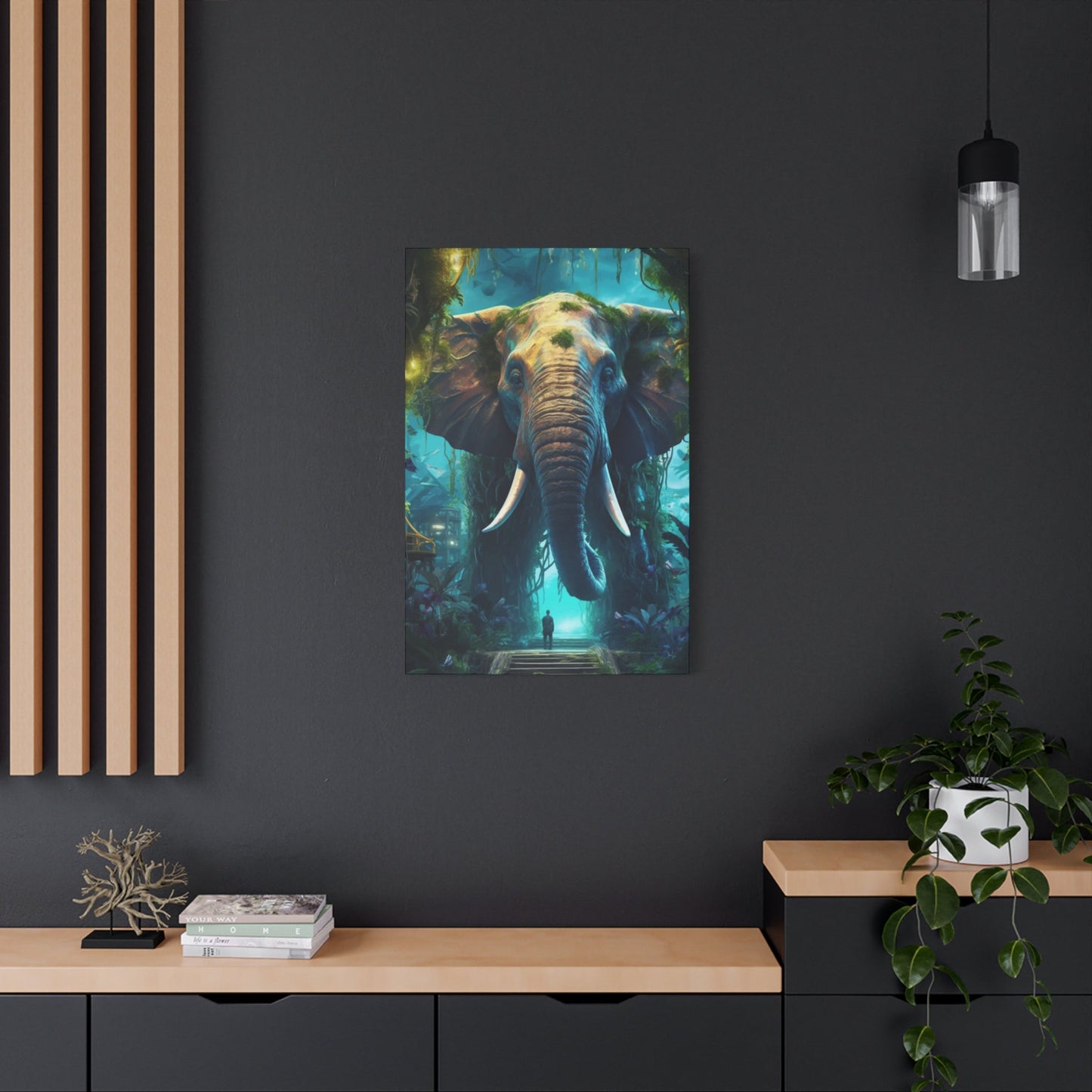Elephant Statue Wall Art: Creating Magnificent Living Environments Through Majestic Artwork
Elephant artwork has emerged as one of the most compelling and meaningful decorative elements in contemporary home decoration. These majestic creatures represent wisdom, strength, and good fortune across numerous cultures worldwide, making elephant-themed artwork an exceptional choice for enhancing any living environment. The profound symbolism associated with elephants, combined with their visually striking presence, creates artwork that serves both aesthetic and spiritual purposes in modern homes.
The popularity of elephant-themed decorative pieces has grown exponentially in recent years, as homeowners increasingly seek meaningful artwork that connects them with nature's most revered animals. From traditional canvas prints featuring realistic elephant portraits to abstract interpretations that capture the essence of these magnificent beings, the variety of available options ensures that every homeowner can find pieces that resonate with their personal style and philosophical beliefs.
Contemporary artists have embraced elephant imagery as a powerful medium for expressing themes of family, memory, and resilience. The emotional depth that elephants represent translates beautifully into visual art, creating pieces that not only beautify rooms but also inspire contemplation and positive energy. Whether displayed in living rooms, bedrooms, offices, or children's rooms, elephant artwork brings a sense of majesty and tranquility that few other decorative themes can match.
The versatility of elephant artwork extends beyond traditional paintings and prints. Modern decorative options include metal sculptures, wooden carvings, textile hangings, and mixed-media installations that incorporate various materials and textures. This diversity allows homeowners to choose pieces that complement their existing decor while adding unique focal points that spark conversation and admiration.
Cultural significance plays a crucial role in the appeal of elephant artwork. In many Eastern traditions, elephants symbolize prosperity, wisdom, and protection, making them auspicious additions to any home. Western cultures have also embraced these positive associations, viewing elephants as symbols of family bonds, intelligence, and environmental consciousness. This cross-cultural appeal makes elephant artwork universally appreciated and meaningful.
Advantages of Incorporating Elephant Artwork in Professional Environments
Professional environments benefit tremendously from the inclusion of elephant-themed decorative elements, as these pieces create atmospheres conducive to productivity, creativity, and positive business relationships. The psychological impact of elephant imagery in office settings extends far beyond mere aesthetic enhancement, influencing mood, motivation, and overall workplace satisfaction.
Elephant artwork in professional environments serves as a constant reminder of strength and determination, qualities essential for business success. The presence of these majestic creatures in visual form can inspire employees to approach challenges with the same steadfast resolve that elephants demonstrate in their natural habitats. This psychological boost translates into improved performance, increased job satisfaction, and enhanced team cohesion.
The calming effect of elephant imagery helps reduce workplace stress and anxiety, creating more harmonious work environments. Studies have shown that nature-inspired artwork, particularly pieces featuring gentle giants like elephants, can lower cortisol levels and promote mental well-being among office workers. This stress reduction leads to improved focus, better decision-making, and increased overall productivity.
Elephant artwork also serves as excellent conversation starters in professional settings, facilitating networking opportunities and strengthening client relationships. Visitors and clients often find themselves drawn to compelling elephant pieces, providing natural opportunities for business professionals to engage in meaningful conversations that extend beyond work-related topics. These interactions help build stronger professional relationships and create more memorable business experiences.
The symbolic associations of elephants with wisdom and good fortune make them particularly appropriate for professional environments where important decisions are made daily. Having elephant artwork visible during meetings and negotiations can serve as subtle reminders of the importance of thoughtful consideration and strategic thinking. Many business owners report feeling more confident and grounded when surrounded by elephant imagery during crucial business discussions.
From a feng shui perspective, elephant artwork positioned strategically in offices can enhance career prospects and financial success. Placing elephant pieces near entrances is believed to attract prosperity and protect against negative energy, while positioning them in specific directions according to feng shui principles can amplify their beneficial effects on business endeavors.
The durability and timeless appeal of elephant artwork make it a sound investment for professional environments. Unlike trendy decorative themes that may become outdated quickly, elephant imagery maintains its relevance and appeal across different design trends and business cycles. This longevity ensures that office decorating investments in elephant artwork continue to provide value for years to come.
Creating Enchanting Children's Rooms with Elephant Themed Artwork
Children's rooms transform into magical sanctuaries when decorated with elephant-themed artwork, providing young minds with inspiring imagery that encourages imagination, learning, and emotional development. The gentle nature of elephants, combined with their fascinating behaviors and family structures, makes them ideal subjects for children's decorative themes that grow with kids as they mature.
Elephant artwork in children's rooms serves multiple developmental purposes, from stimulating visual learning to encouraging storytelling and creative play. Young children are naturally drawn to the expressive features and gentle demeanor of elephants, finding comfort and security in their presence. This emotional connection helps create nurturing environments where children feel safe to explore, learn, and express themselves freely.
The educational value of elephant-themed decorative elements cannot be overstated. Children exposed to elephant imagery naturally develop curiosity about these remarkable animals, leading to learning opportunities about wildlife conservation, different cultures, and the importance of family relationships. Parents can use elephant artwork as starting points for discussions about geography, animal behavior, and environmental responsibility.
Color psychology plays a significant role in children's room decoration, and elephant artwork offers tremendous flexibility in this regard. Soft, muted tones featuring gentle elephant imagery promote restful sleep and calm behavior, while brighter, more vibrant elephant pieces encourage active play and creative expression. The ability to choose elephant artwork that matches desired behavioral outcomes makes these pieces particularly valuable for children's environments.
Safety considerations are paramount when selecting elephant artwork for children's rooms, and modern options address these concerns while maintaining aesthetic appeal. Canvas prints with rounded corners, securely mounted pieces, and non-toxic materials ensure that elephant-themed decorative elements enhance children's rooms without compromising safety. Many manufacturers now specialize in child-safe elephant artwork that meets strict safety standards while delivering beautiful visual impact.
The storytelling potential of elephant artwork enriches children's imaginative development and language skills. Parents and caregivers can create elaborate stories based on elephant pieces, encouraging children to contribute their own ideas and observations. This interactive approach to decorating transforms static artwork into dynamic learning tools that engage multiple senses and cognitive functions.
Elephant artwork also helps children develop emotional intelligence by providing opportunities to discuss feelings, relationships, and social behaviors. The strong family bonds exhibited by elephants serve as excellent examples for teaching children about love, loyalty, and cooperation. These lessons become more meaningful when reinforced through visual reminders present in their daily environments.
Harmonizing Elephant Artwork with Additional Animal Themed Decorations
Creating cohesive decorative schemes that incorporate elephant artwork alongside other animal themes requires careful consideration of visual balance, color coordination, and thematic consistency. The key to successful multi-animal decorating lies in understanding how different animal imagery interacts and complement each other to create harmonious rather than chaotic environments.
Elephant artwork pairs exceptionally well with other African safari animals, creating exotic and adventurous atmospheric themes. Lions, giraffes, zebras, and rhinoceros imagery can be combined with elephant pieces to transport viewers to African savannas and wildlife reserves. This approach works particularly well in children's rooms, family rooms, and educational environments where the goal is to create immersive experiences that inspire wonder and learning.
The gentle nature of elephants makes them excellent anchoring elements in mixed animal themes, providing stability and calm that balance more dynamic or aggressive animal imagery. For example, combining elephant artwork with tiger or leopard pieces creates interesting contrasts between peaceful and predatory animals, while the elephant's serene presence prevents the overall theme from becoming overwhelming or intimidating.
Size relationships between different animal artwork pieces significantly impact the visual success of mixed themes. Elephants, being naturally large animals, should typically be represented at appropriate scale relative to other animals in the decorative scheme. This attention to proportional relationships creates more realistic and visually satisfying arrangements that feel natural rather than arbitrary.
Color coordination becomes particularly important when mixing elephant artwork with other animal themes. Establishing a consistent color palette that flows through all animal pieces helps create unity despite the diversity of subjects. Earth tones, safari colors, and natural palettes work exceptionally well for mixed animal themes, allowing individual pieces to shine while maintaining overall harmony.
Texture variation adds depth and interest to mixed animal decorative schemes. Combining smooth elephant canvas prints with textured zebra tapestries, carved wooden giraffe sculptures, and metal lion accents creates rich, multi-dimensional environments that engage viewers on multiple sensory levels. This textural diversity prevents mixed animal themes from appearing flat or monotonous.
Cultural considerations should guide the selection and combination of different animal artwork. Mixing animals from similar geographical regions or cultural contexts creates more authentic and meaningful decorative schemes. For example, combining African animals maintains geographical consistency, while mixing Asian elephants with tigers and pandas creates culturally coherent Eastern-themed environments.
Creative Projects for Crafting Personal Elephant Artwork
Embarking on do-it-yourself elephant artwork projects offers homeowners unique opportunities to create personalized decorative pieces that perfectly match their individual style preferences and room requirements. These creative endeavors not only result in custom artwork but also provide therapeutic benefits through the meditative process of artistic creation and the satisfaction of producing beautiful, meaningful pieces.
Canvas painting projects featuring elephant subjects appeal to artists of all skill levels, from complete beginners to experienced painters seeking new challenges. Simple elephant silhouettes can be painted using basic techniques and minimal supplies, while more complex projects involving realistic elephant portraits require advanced skills and specialized materials. The key to successful elephant painting projects lies in selecting appropriate complexity levels that match available skills while still providing opportunities for growth and learning.
Mixed media elephant artwork projects combine various materials and techniques to create unique, textured pieces that stand out from traditional paintings or prints. These projects might incorporate fabric elements, natural materials like dried leaves or bark, metallic accents, or three-dimensional components that add depth and visual interest. The versatility of mixed media approaches allows creators to experiment with different materials while developing their artistic voices.
Stenciling techniques offer accessible entry points for creating professional-looking elephant artwork without requiring advanced drawing or painting skills. Pre-made elephant stencils can be used with various painting techniques, spray paints, or other coloring materials to produce consistent, clean results. More adventurous crafters can create their own stencils, allowing for completely customized elephant imagery that reflects personal artistic visions.
Collage techniques provide opportunities to create elephant artwork using recycled materials, photographs, fabric scraps, or other found objects. These environmentally conscious projects transform discarded materials into meaningful art while developing creative problem-solving skills. Elephant-themed collages can incorporate actual elephant photographs, textural elements that suggest elephant skin, or abstract representations that capture the essence of these magnificent animals.
Digital art creation has opened new possibilities for designing and producing custom elephant artwork. Graphic design software allows artists to create detailed elephant illustrations, manipulate photographs, or combine various digital elements into unique compositions. These digital creations can be printed on various materials, from traditional paper to canvas, metal, or fabric, providing flexibility in final presentation options.
Woodworking projects featuring elephant themes appeal to crafters interested in three-dimensional artwork and those who enjoy working with natural materials. Simple elephant silhouettes can be cut from plywood and painted or stained, while more complex projects might involve carving detailed elephant figures or creating layered wooden pieces that suggest depth and movement. These projects require woodworking tools and skills but produce durable, distinctive artwork pieces.
Incorporating Elephant Artwork in Clean, Simplified Decorating Schemes
Minimalist decorating principles emphasize simplicity, functionality, and the careful selection of meaningful elements that enhance rather than clutter living environments. Elephant artwork can play important roles in minimalist schemes when chosen and positioned thoughtfully, providing focal points and emotional resonance without overwhelming clean, uncluttered aesthetic goals.
The key to successfully incorporating elephant artwork in minimalist environments lies in selecting pieces that embody the same principles of simplicity and restraint that define minimalist design. Clean-lined elephant silhouettes, monochromatic elephant photographs, and abstract elephant representations often work better than busy, colorful, or highly detailed pieces that might conflict with minimalist sensibilities.
Scale considerations become particularly important in minimalist settings where every element receives heightened attention due to reduced visual competition. A single, well-chosen elephant artwork piece can serve as a powerful focal point in a minimalist room, while multiple smaller pieces might create unnecessary complexity that conflicts with minimalist goals. The principle of "less is more" applies strongly to elephant artwork selection in these contexts.
Color harmony between elephant artwork and minimalist color schemes requires careful attention to ensure seamless integration. Minimalist environments typically feature limited color palettes, often focusing on whites, grays, and natural tones. Elephant artwork should complement these existing colors rather than introducing jarring contrasts that disrupt visual harmony. Black and white elephant photographs, sepia-toned prints, or subtle color elephant imagery often work well in these settings.
Material selection for elephant artwork in minimalist environments should align with the clean, natural materials often featured in minimalist design. Simple canvas prints, unframed pieces, or artwork mounted on natural wood complement minimalist material palettes better than ornate frames or artificial materials that might appear out of place in simplified settings.
Positioning elephant artwork in minimalist rooms requires strategic placement that maximizes impact while maintaining clean sight lines and uncluttered surfaces. Single elephant pieces positioned against clean walls create striking focal points without competing with other decorative elements. The negative around elephant artwork becomes as important as the artwork itself in minimalist compositions.
Lighting considerations play crucial roles in highlighting elephant artwork within minimalist schemes. Clean, directional lighting can dramatically enhance elephant artwork presentation while maintaining the simple, uncluttered lighting approaches favored in minimalist design. Track lighting, picture lights, or strategically placed lamps can illuminate elephant pieces without adding visual complexity to the overall environment.
Maintenance and Preservation Techniques for Canvas Elephant Artwork
Proper care and maintenance of canvas elephant prints ensures these valuable decorative investments retain their beauty and impact for many years while protecting them from environmental damage, fading, and deterioration. Understanding appropriate preservation techniques helps homeowners maximize the lifespan and visual quality of their elephant artwork collections.
Environmental factors significantly impact the longevity of canvas elephant prints, making proper placement and climate control essential for preservation. Direct sunlight exposure represents one of the greatest threats to canvas artwork, causing colors to fade and materials to deteriorate over time. Positioning elephant prints away from windows or using UV-protective glazing helps minimize sun damage while maintaining visibility and aesthetic impact.
Humidity control plays a crucial role in canvas preservation, as excessive moisture can cause canvas materials to warp, develop mold, or suffer other moisture-related damage. Maintaining consistent humidity levels between forty and sixty percent helps preserve canvas integrity while preventing environmental stress that could damage elephant artwork. Dehumidifiers or humidity monitoring devices can help maintain optimal conditions in rooms containing valuable canvas pieces.
Temperature fluctuations can cause canvas materials to expand and contract, potentially leading to cracking, warping, or other structural damage. Maintaining stable room temperatures and avoiding placement near heat sources like radiators, fireplaces, or heating vents helps protect canvas elephant prints from temperature-related deterioration. Gradual temperature changes are less harmful than sudden fluctuations that stress canvas materials.
Regular cleaning and maintenance routines help preserve canvas elephant prints while preventing the accumulation of dust, dirt, and other contaminants that could degrade image quality or damage materials. Gentle dusting with soft, dry brushes removes surface debris without applying excessive pressure that might damage canvas surfaces or printed imagery. Professional cleaning services may be necessary for valuable pieces or those showing signs of significant contamination.
Proper mounting and framing techniques contribute significantly to canvas preservation by providing structural support and protection from environmental hazards. High-quality mounting materials that won't introduce acids or other harmful chemicals help preserve canvas integrity over time. Professional framing services can ensure proper mounting techniques that support canvas weight while allowing for natural expansion and contraction.
Storage considerations become important for canvas elephant prints that aren't currently displayed but need preservation for future use. Proper storage involves protecting pieces from light, moisture, dust, and physical damage while allowing air circulation that prevents mold or mildew development. Acid-free storage materials and climate-controlled environments provide optimal conditions for long-term canvas preservation.
Elephant Artwork and Ancient Chinese Harmonizing Principles
The integration of elephant artwork within feng shui decorating principles offers opportunities to enhance positive energy flow while creating harmonious living environments that support well-being, prosperity, and spiritual growth. Understanding traditional feng shui applications of elephant imagery helps homeowners position these pieces strategically for maximum beneficial impact.
According to feng shui traditions, elephants symbolize wisdom, protection, and good fortune, making them powerful additions to home environments when positioned correctly. The trunk position of elephant imagery carries specific significance in feng shui practice, with upward-pointing trunks believed to attract good luck and prosperity, while downward-pointing trunks are thought to provide protection and stability.
Directional placement of elephant artwork according to feng shui principles can enhance different aspects of life and well-being. Positioning elephant pieces in the wealth corner of rooms (typically the far left corner from the entrance) is believed to attract financial prosperity and abundance. Placing elephant artwork near entrances provides protection for the home while welcoming positive energy and opportunities.
The number of elephants depicted in artwork carries significance in feng shui practice, with different quantities thought to influence various life aspects. Single elephant pieces often represent strength and individual power, while pairs symbolize partnership and relationship harmony. Groups of elephants may represent family unity and collective strength, making them appropriate for family rooms and gathering areas.
Color considerations in elephant artwork selection can align with feng shui element theories and their associated benefits. Golden or yellow elephant pieces connect with earth elements and are believed to enhance stability and grounding energy. White or silver elephant artwork relates to metal elements and may support clarity and precision, while darker elephant pieces might enhance water element energy associated with wisdom and introspection.
Material selection for elephant artwork can also align with feng shui element theories, with different materials supporting different energy types. Wooden elephant pieces support wood element energy associated with growth and creativity, while metal elephant sculptures enhance metal element energy linked to organization and efficiency. Canvas or fabric elephant artwork may support various elements depending on colors and imagery.
Size and scale considerations in feng shui placement ensure that elephant artwork maintains appropriate proportions relative to room dimensions and other decorative elements. Oversized elephant pieces might overwhelm smaller rooms and disrupt energy balance, while pieces that are too small might not provide sufficient energy enhancement. Achieving proper scale balance helps optimize feng shui benefits while maintaining visual harmony.
Comparing Abstract and Realistic Elephant Artistic Approaches
The choice between abstract and realistic elephant artwork significantly impacts the overall aesthetic effect, emotional response, and decorative versatility of these pieces within different home environments. Understanding the distinctive characteristics, advantages, and applications of each artistic approach helps homeowners select elephant artwork that best serves their decorative goals and personal preferences.
Realistic elephant artwork focuses on accurate representation of these magnificent animals, capturing their physical characteristics, natural behaviors, and environmental contexts with photographic or near-photographic precision. These pieces often showcase the incredible detail of elephant skin textures, the expressiveness of their eyes, and the graceful power of their movements. Realistic elephant artwork appeals to viewers who appreciate technical skill, natural beauty, and authentic animal representation.
The emotional impact of realistic elephant artwork tends to be immediate and powerful, as viewers can easily connect with recognizable elephant imagery that evokes memories, associations, and feelings related to these beloved animals. This direct emotional connection makes realistic elephant pieces particularly effective in environments where the goal is to create strong emotional responses or commemorate meaningful experiences related to elephants or wildlife.
Abstract elephant artwork interprets elephant subjects through artistic filters that emphasize color, form, movement, or emotion rather than literal representation. These pieces might capture the essence of elephant presence through bold brushstrokes, geometric shapes, color combinations, or symbolic elements that suggest rather than depict elephant characteristics. Abstract approaches offer greater artistic freedom and interpretation possibilities.
The versatility of abstract elephant artwork often exceeds that of realistic pieces, as abstract interpretations can complement a wider range of decorating styles and color schemes. While realistic elephant artwork might clash with certain contemporary or minimalist designs, abstract elephant pieces can be selected or created to harmonize with virtually any aesthetic approach, from traditional to ultra-modern.
Symbolic potential differs significantly between abstract and realistic elephant artwork approaches. While realistic pieces rely on viewers' existing associations with elephants, abstract pieces can introduce new symbolic meanings or emphasize specific elephant characteristics through artistic emphasis. Abstract artists might highlight elephant wisdom through symbolic elements, suggest elephant strength through dynamic compositions, or capture elephant gentleness through soft, flowing forms.
Investment considerations may influence the choice between abstract and realistic elephant artwork, as market values and appreciation potential can vary significantly between approaches. Realistic wildlife artwork often has established market values based on technical skill and subject popularity, while abstract pieces might offer greater potential for unique artistic expression and individual artist recognition.
Maintenance and preservation requirements can differ between abstract and realistic elephant artwork, depending on materials, techniques, and complexity. Realistic pieces with fine detail might require more careful handling and specific preservation techniques, while abstract pieces using various materials or techniques might have different maintenance needs based on their unique construction methods.
Color Schemes and Palettes for Elephant Themed Decorations
The selection of appropriate color schemes for elephant-themed decorations significantly influences the overall mood, aesthetic impact, and integration success of these pieces within existing room designs. Understanding how different color approaches affect elephant artwork presentation helps homeowners create cohesive, visually appealing environments that maximize the decorative potential of elephant imagery.
Earthy, natural color palettes complement elephant artwork exceptionally well, as these colors reflect the natural habitats and environments where elephants thrive. Warm browns, rich tans, sage greens, and dusty oranges create authentic, organic feeling environments that enhance the natural appeal of elephant subjects. These color schemes work particularly well in rustic, traditional, or nature-inspired decorating themes.
Monochromatic color schemes featuring variations of single colors can create sophisticated, unified looks that highlight elephant artwork without overwhelming visual complexity. Gray monochromatic schemes, ranging from light silver to deep charcoal, provide elegant backdrops that allow elephant imagery to take center stage while maintaining refined aesthetic appeal. These approaches work well in contemporary and minimalist environments.
Neutral color schemes offer tremendous flexibility for incorporating elephant artwork into diverse decorating styles and changing design trends. Combinations of whites, beiges, creams, and soft grays provide timeless backdrops that won't compete with elephant artwork for visual attention while offering long-term decorating versatility. Neutral schemes also allow for easy updates through accent colors and accessories.
Bold, vibrant color schemes can create dramatic, energetic environments that celebrate the majesty and power of elephant subjects. Deep jewel tones like emerald green, sapphire blue, or ruby red can provide striking backdrops for elephant artwork while creating memorable, impactful decorative statements. These approaches work well in eclectic, maximalist, or globally-inspired decorating themes.
Cultural color associations can guide elephant artwork color scheme selection, particularly when incorporating pieces inspired by specific cultural traditions. Indian-inspired elephant artwork might be enhanced by rich golds, deep reds, and vibrant oranges that reflect traditional Indian textiles and decorative arts. African-inspired pieces might benefit from warm earth tones and sunset colors that evoke African landscapes.
Seasonal color adaptations allow homeowners to refresh elephant artwork presentation throughout the year while maintaining consistent decorative themes. Warm, rich colors during autumn and winter months can create cozy, intimate atmospheres, while lighter, brighter colors during spring and summer can create fresh, energetic moods. This seasonal approach keeps elephant-themed decorations feeling current and dynamic.
Psychology of color plays important roles in elephant artwork color scheme selection, as different colors can influence mood, behavior, and emotional responses. Calming blues and greens might be preferred in bedrooms or meditation areas, while energizing reds and oranges might work better in social areas like living rooms or dining rooms. Understanding color psychology helps optimize elephant artwork's emotional impact.
Elephant Sculptures and Artwork in Asian-Influenced Decoration
Asian-influenced decorating styles provide natural, harmonious contexts for elephant artwork and sculptures, as elephants hold deep cultural significance throughout many Asian traditions and philosophical systems. Integrating elephant imagery within Asian decorating themes creates authentic, meaningful environments that honor cultural heritage while providing beautiful, inspiring living areas.
Traditional Asian decorating principles emphasize balance, harmony, and the thoughtful integration of meaningful symbols and imagery. Elephants fit perfectly within these principles, representing wisdom, prosperity, and spiritual strength across various Asian cultures. From Thai temple art to Indian palace decorations, elephants have been celebrated in Asian artistic traditions for thousands of years.
Buddhist and Hindu traditions both revere elephants as sacred animals associated with important deities and spiritual concepts. In Buddhist contexts, white elephants symbolize mental strength and wisdom, while Hindu traditions associate elephants with Ganesha, the remover of obstacles and patron of arts and sciences. Incorporating elephant artwork within Asian-themed rooms honors these spiritual associations while creating inspiring environments.
Material selection for elephant artwork in Asian-influenced decorating should align with traditional Asian aesthetic preferences for natural materials and refined craftsmanship. Carved wooden elephant sculptures, bronze elephant figurines, or stone elephant statuary complement Asian decorating themes better than synthetic materials or obviously manufactured pieces that might disrupt authentic atmospheric goals.
Color coordination within Asian-influenced elephant decorating schemes often emphasizes earth tones, metallic accents, and colors significant in Asian cultural traditions. Gold elephant artwork reflects the precious metal's importance in Asian decorative arts and religious contexts. Red elephant pieces can incorporate the lucky color's positive associations in Chinese culture, while white elephant imagery honors its sacred status in Buddhist traditions.
Placement principles for elephant artwork in Asian-influenced decorating often follow traditional feng shui or vastu shastra guidelines that maximize beneficial energy effects. Strategic positioning near entrances, in prosperity corners, or facing specific directions can enhance the positive influence of elephant imagery while maintaining authentic Asian decorating approaches.
Contemporary Asian-influenced decorating allows for creative interpretations that blend traditional elephant symbolism with modern design sensibilities. Abstract elephant artwork using traditional Asian color palettes, modern materials combined with classical elephant forms, or contemporary artistic techniques applied to traditional elephant subjects can create unique fusion styles that honor cultural heritage while embracing current design trends.
Creating Dramatic Focal Points with Elephant Artwork
Strategic use of elephant artwork as focal point elements can transform ordinary rooms into extraordinary environments that capture attention, spark conversation, and provide compelling visual anchors for entire decorating schemes. Understanding focal point design principles helps homeowners maximize the dramatic impact of elephant artwork while creating balanced, harmonious compositions.
Scale considerations play crucial roles in elephant artwork focal point success, as pieces must be appropriately sized to command attention without overwhelming room proportions or competing elements. Large elephant artwork can serve as dramatic focal points in spacious rooms, while smaller rooms might benefit from medium-sized pieces that provide impact without creating visual chaos. The key lies in achieving proportional relationships that feel natural and balanced.
Strategic positioning maximizes elephant artwork focal point effectiveness by placing pieces where they naturally draw attention and enhance room flow. Positioning elephant artwork opposite main entrances ensures immediate visual impact for anyone entering the room, while placement above seating areas creates comfortable viewing opportunities for room occupants. Corner placement can anchor conversation areas while maintaining traffic flow.
Lighting enhancement dramatically amplifies elephant artwork focal point potential by creating dramatic shadows, highlighting textures, and controlling visual emphasis. Picture lighting, track lighting, or strategically placed accent lights can transform elephant artwork from simple decorative elements into commanding focal points that define entire room atmospheres. Lighting angles and intensities should be adjustable to accommodate different moods and activities.
Supporting decorative elements should complement rather than compete with elephant artwork focal points, creating cohesive compositions that enhance rather than distract from primary elephant pieces. Complementary colors, compatible textures, and appropriate scale relationships in surrounding decorative elements help reinforce elephant artwork prominence while maintaining visual harmony throughout the room.
Background preparation ensures that elephant artwork focal points receive appropriate visual support without unnecessary distraction or competition. Clean, uncluttered backgrounds allow elephant imagery to command full attention, while busy or conflicting backgrounds can diminish focal point effectiveness. Sometimes minor wall color adjustments or furniture repositioning can dramatically improve elephant artwork focal point impact.
Multiple focal point coordination requires careful planning when incorporating several elephant artwork pieces or combining elephant focal points with other room emphasis areas. Establishing primary and secondary focal point relationships helps create visual hierarchy that guides attention flow while preventing competing focal points from creating visual confusion or chaos.
Seasonal and occasional focal point adaptations allow homeowners to refresh elephant artwork presentation throughout the year while maintaining consistent focal point effectiveness. Holiday decorations, seasonal color changes, or temporary supporting elements can modify elephant focal point appearance without requiring permanent changes to room arrangements or major decorative investments.
Bohemian Decorating Styles and Elephant Imagery
Bohemian decorating styles embrace eclecticism, cultural diversity, and artistic expression, making elephant imagery a perfect complement to bohemian aesthetic goals and philosophical approaches. The free-spirited, globally-inspired nature of bohemian design welcomes elephant artwork as meaningful additions that enhance the style's emphasis on personal expression, cultural appreciation, and artistic diversity.
Cultural authenticity plays important roles in bohemian elephant artwork selection, as bohemian style celebrates genuine cultural expressions rather than superficial decorative elements. Authentic elephant artwork from Indian, Thai, African, or other cultures where elephants hold special significance adds meaningful depth to bohemian environments while honoring artistic traditions and cultural heritage.
Textile integration represents a hallmark of bohemian decorating that complements elephant artwork beautifully. Elephant-themed tapestries, embroidered elephant pillows, or elephant-printed fabrics can be layered with elephant artwork to create rich, multi-textural environments characteristic of bohemian style. These textile elements add warmth, comfort, and cultural richness to elephant-themed bohemian decorating schemes.
Color mixing and layering in bohemian environments provide perfect contexts for diverse elephant artwork colors and styles. The bohemian preference for rich, saturated colors, metallics, and pattern mixing allows elephant artwork to coexist harmoniously with other vibrant decorative elements. This color freedom enables creative elephant artwork combinations that might not work in more restrained decorating styles.
Global fusion approaches in bohemian decorating welcome elephant artwork from different cultural traditions within single environments. Indian elephant artwork can be combined with African elephant sculptures, Thai elephant textiles, and contemporary elephant interpretations to create globally-inspired compositions that celebrate elephant symbolism across cultures while maintaining bohemian aesthetic goals.
Artistic layering techniques allow bohemian decorators to incorporate multiple elephant artwork pieces at different scales and heights, creating dynamic, visually rich environments that evolve and change based on viewing angles and lighting conditions. This layering approach prevents bohemian environments from appearing flat or static while maximizing the visual impact of elephant artwork collections.
Handcrafted and artisanal elephant artwork elements align perfectly with bohemian preferences for unique, personally meaningful decorative items over mass-produced alternatives. Seeking out handmade elephant pottery, carved elephant sculptures, or original elephant paintings adds authenticity and individual character that supports bohemian philosophical approaches to decorating and living.
Natural material integration in bohemian elephant decorating schemes emphasizes organic textures, sustainable materials, and connections to nature. Wooden elephant carvings, stone elephant sculptures, or elephant artwork on natural fiber canvases complement bohemian material preferences while reinforcing the natural beauty and environmental consciousness often associated with both elephants and bohemian lifestyle choices.
Professional Framing Solutions for Elephant Canvas Artwork
Professional framing elevates elephant canvas artwork from simple decorative elements to sophisticated art pieces that command respect, enhance presentation quality, and provide long-term preservation benefits. Understanding framing options, techniques, and considerations helps homeowners make informed decisions that maximize their elephant artwork investments while achieving desired aesthetic results.
Frame style selection significantly impacts the overall presentation and integration success of elephant canvas artwork within different decorating schemes. Traditional wooden frames complement classical and rustic environments, while sleek metal frames work better with contemporary or minimalist designs. The frame should enhance rather than overshadow elephant artwork while harmonizing with existing room aesthetics.
Material quality in professional framing directly affects both immediate visual impact and long-term artwork preservation. High-quality framing materials resist warping, discoloration, and deterioration while providing structural support that protects canvas artwork from environmental stresses. Investing in quality framing materials ensures elephant artwork maintains its appearance and value over time.
Matting considerations can dramatically alter elephant artwork presentation while providing additional protection and visual enhancement. Double matting, colored mats, or textured matting materials can create sophisticated presentations that complement elephant imagery while providing professional finishing touches. Matting also creates visual between artwork and frames while offering opportunities for creative color coordination.
Glass selection for elephant canvas framing involves balancing protection benefits with visual considerations and budget constraints. Regular glass provides basic protection at economical prices, while UV-protective glass offers superior preservation benefits that justify higher costs for valuable artwork. Non-reflective glass eliminates glare issues that can interfere with artwork viewing in certain lighting conditions.
Custom framing services provide opportunities to create unique presentations that perfectly complement specific elephant artwork pieces and room environments. Professional framers can recommend appropriate materials, techniques, and styles while ensuring proper mounting and preservation practices. Custom framing investments often prove worthwhile for valuable or particularly meaningful elephant artwork pieces.
Conservation framing techniques become important for valuable elephant canvas artwork or pieces with sentimental significance that require maximum preservation protection. Acid-free materials, proper spacing, climate considerations, and archival-quality components ensure artwork longevity while maintaining museum-quality presentation standards. These techniques represent significant investments but provide superior long-term value.
Installation considerations affect both artwork security and presentation quality once framing is completed. Proper wall mounting, appropriate hanging hardware, and consideration of wall materials and construction ensure elephant artwork remains secure while achieving optimal viewing positions. Professional installation services may be justified for large, heavy, or particularly valuable framed pieces.
Contemporary Elephant Artwork
The elephant artwork market continues evolving with new trends, techniques, and aesthetic approaches that reflect contemporary design sensibilities, technological advances, and changing cultural perspectives. Staying informed about current elephant artwork trends helps homeowners make selections that feel fresh, current, and aligned with contemporary decorating directions.
Digital art techniques have revolutionized elephant artwork creation, enabling artists to produce pieces that combine photographic realism with painterly effects, incorporate multiple exposures, or blend various artistic media in ways impossible with traditional techniques. These digital innovations result in elephant artwork that feels both contemporary and timeless while offering unique visual experiences.
Sustainable and eco-conscious elephant artwork reflects growing environmental awareness and commitment to responsible consumption practices. Artists increasingly use recycled materials, sustainable production methods, and environmentally friendly printing processes to create elephant artwork that aligns with ecological values while supporting conservation efforts for real elephants in the wild.
Mixed media approaches combining traditional and contemporary materials create elephant artwork that offers rich textural experiences and unique visual depth. These pieces might incorporate fabric elements, metal accents, natural materials, or three-dimensional components that extend beyond traditional flat artwork presentations while maintaining sophisticated aesthetic appeal.
Cultural fusion trends blend elephant imagery from different traditions within single artwork pieces, creating globally-inspired compositions that celebrate cultural diversity while honoring traditional symbolism and artistic approaches. These fusion pieces appeal to contemporary collectors who appreciate cultural richness and international perspectives in their decorative choices.
Minimalist elephant artwork interpretations strip away unnecessary detail to focus on essential forms, colors, and emotional content that capture elephant essence without overwhelming visual complexity. These simplified approaches align with contemporary preferences for clean, uncluttered design while maintaining meaningful connections to elephant symbolism and natural beauty.
Interactive and technological elephant artwork incorporates digital displays, lighting effects, or responsive elements that change based on environmental conditions or viewer interaction. These innovative approaches transform static elephant artwork into dynamic experiences that engage viewers in new ways while pushing traditional artwork boundaries.
Personalization trends allow collectors to commission custom elephant artwork that reflects personal experiences, memories, or aesthetic preferences while maintaining professional artistic quality. This trend toward personalized artwork reflects contemporary desires for unique, meaningful decorative elements that can't be replicated in other homes.
Large-scale elephant artwork installations create dramatic impact in contemporary environments while serving as architectural elements that define and enhance room proportions. These substantial pieces often serve multiple functions as room dividers, focal points, and artistic statements that transform entire environments rather than simply adding decorative accents.
Conclusion
Elephant statue wall art is a powerful and majestic addition to any living environment, blending cultural symbolism, natural grace, and artistic beauty into one striking décor statement. Revered across many cultures as symbols of strength, wisdom, protection, and good fortune, elephants bring more than visual impact—they bring meaning and presence to the spaces they inhabit.
Incorporating elephant statue wall art into your home offers more than just decorative value; it sets the tone for a space that is both grounded and inspiring. Whether displayed in a minimalist modern setting or a globally inspired interior, these artworks add depth, character, and a touch of the extraordinary. The strong yet gentle form of the elephant—especially when captured in metallic finishes, sculptural textures, or embossed canvases—creates a sense of serenity and grandeur all at once.
Golden or bronze-toned elephant wall art, in particular, enhances the feeling of luxury while still connecting to earthy, natural themes. Paired with neutral palettes, rich textures, or natural materials like wood and stone, these pieces stand out beautifully while maintaining a harmonious atmosphere.
From entryways and living rooms to meditation spaces or offices, elephant-themed wall art invites mindfulness, positivity, and balance into your home. It encourages you and your guests to pause, reflect, and connect with something larger than the everyday.
Ultimately, elephant statue wall art is not just a design choice—it’s a statement of reverence for nature’s majesty and life’s deeper meanings. By choosing this kind of artwork, you create a living environment that’s as powerful as it is peaceful, as meaningful as it is magnificent.













